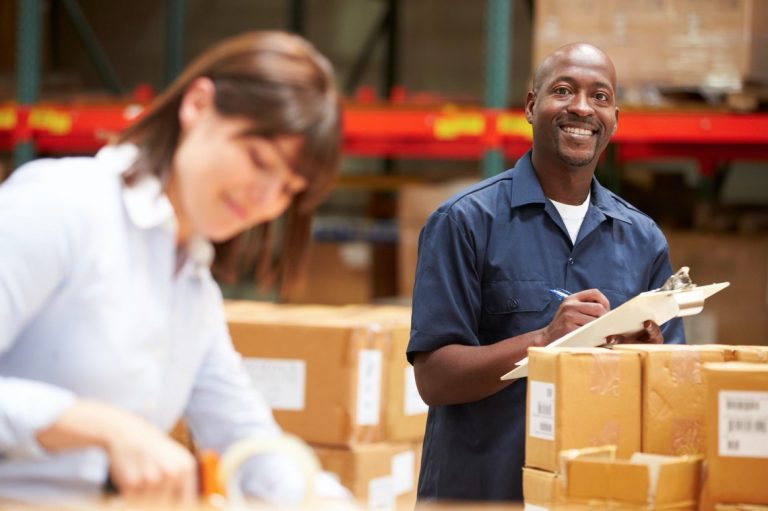Since warehouses are a common point of origin for e-commerce merchandise and packages, warehouse employees are considered essential. There has been an increase in online demand for essential products such as hand soap and certain foods. Not to mention that many people have been furloughed or have little else to do, but shop online.
As a result, many warehouse employees are having to work for long hours in crowded conditions. Not only is this unsafe in terms of transmitting the coronavirus, it also causes other hazards in the warehouse. Overcrowding and poor communication can severely affect the safety of employees if the warehouse is not properly managed.
In this article, we will go through some of the problems facing shipping companies during COVID-19 and what can be done to counteract them.
Problem #1: The transmission of COVID-19.
With many working in close proximity to each other, the spread of the virus is a concern. All employees and managers should be equipped with the necessary personal protection including face masks and gloves.
Separately, it is important for essential public spaces to maintain sensible levels of security during this time. In the same way that shops are operating one-way systems with a limited number of people allowed inside at one time, warehouses should be observing similar guidelines.
Security guards can help the situation. Perhaps they can stand at the entrance of the warehouse to check the face masks of each employee, or manage the amount of people entering a building at any one time.
Problem #2: Poor communication.
Leading on from the previous issue, the protective guidelines for warehouses would only work if there is strong communication between employees and security personnel. For example, to effectively communicate the number of people entering the building, it would be wise for security personnel to be able to communicate via two-way radio.
The time that employees have to spend contacting management in person should also be limited as much as possible. It would be beneficial to employ a cloud-based software that can track stock, inventory, and internal communication for less in-person interaction.
Problem #3: Total area covered by employees.
Many warehouse employees walk between five and ten miles per day because they have to find items on opposite ends of the facility. Also, a classic study found that 60% of a warehouse worker’s day is spent walking.
During COVID-19, this behavior is much more risky since it increases person-to-person contact and potential spread of the virus.
The solution for this problem would be to ensure that each worker is allocated to be a ‘picker’ within one particular zone of the warehouse. If everyone is able to stay to their assigned areas, there will be fewer instances of human contact within the warehouse.
Referring back to Problem #2, each worker should be provided a GPS system that tracks their most efficient route between picking points.
Problem #4: Disorganization.
Because of the spike in purchased items during COVID-19, it can lead to disorganization to the routine, and a more chaotic work environment.
There is a helpful practice called 5S Methodology which you can use to get your warehouse more organized during this time. It is based on five Japanese words, which can be translated in the following way:
- Seiri (Sort). This is all about identifying whether or not items are necessary. Those that are not deemed necessary should be disposed of. To work out whether an item is necessary, think about more than what it actually is. Do you need such a quantity of the item, and where is the best location for it?
- Seiton (Set in order). This expands on the last point of Seiri. Each object should have a sensible location, and objects should always be stored in their designated location. This makes it much easier to navigate the warehouse.
- Seiso (Shine). Keep the warehouse clean! It is going to be a much more efficient and happy environment if the floors are clear of dirt and litter, and there is an effective cleaning rota in place.
- Seiketsu (Standardize). This is all about having accountability for the first three items on this list. There should be a clear leader for setting out the 5S, and all employees should be able to recognize a cluttered and disorganized workplace. It is important to ask questions (e.g: Why do we keep these specific items? In this specific place?) if things are not going well.
- Shitsuke (Sustain). By the fifth and final point, maintaining the practice of 5S will be like second nature to all employees. Visual reminders, such as posters, scattered across the warehouse will keep everyone on the same page.
—
It is undoubtedly a tough time to keep your warehouse safe and under complete control. People from every walk of life are having to adjust to a new normal during the COVID-19 pandemic. However, this article along with cooperative employees, should set you on the path for success during such a challenging time.


0 Comments